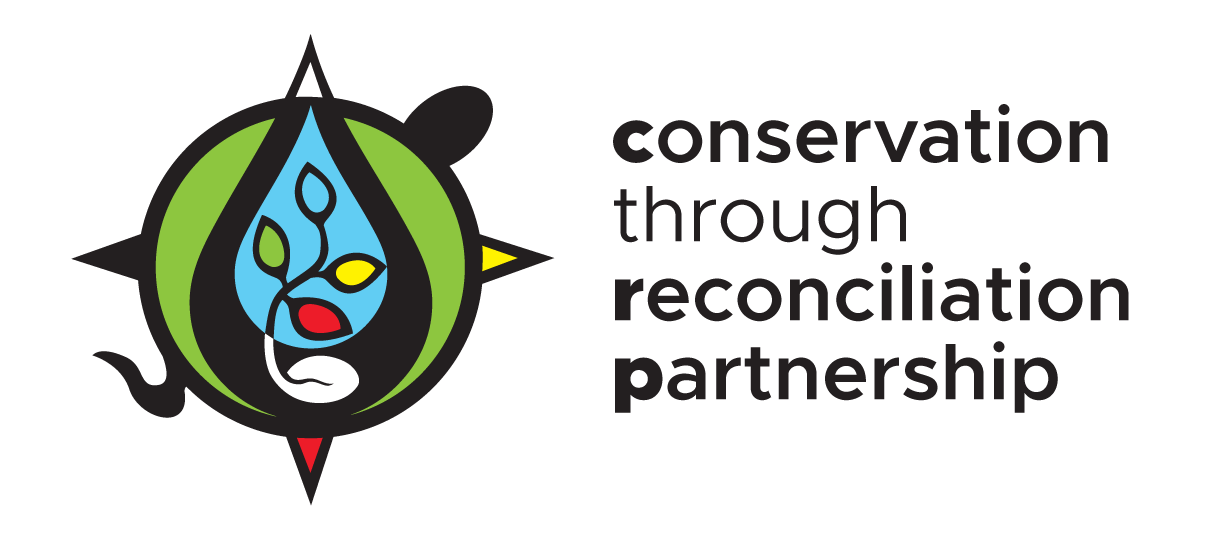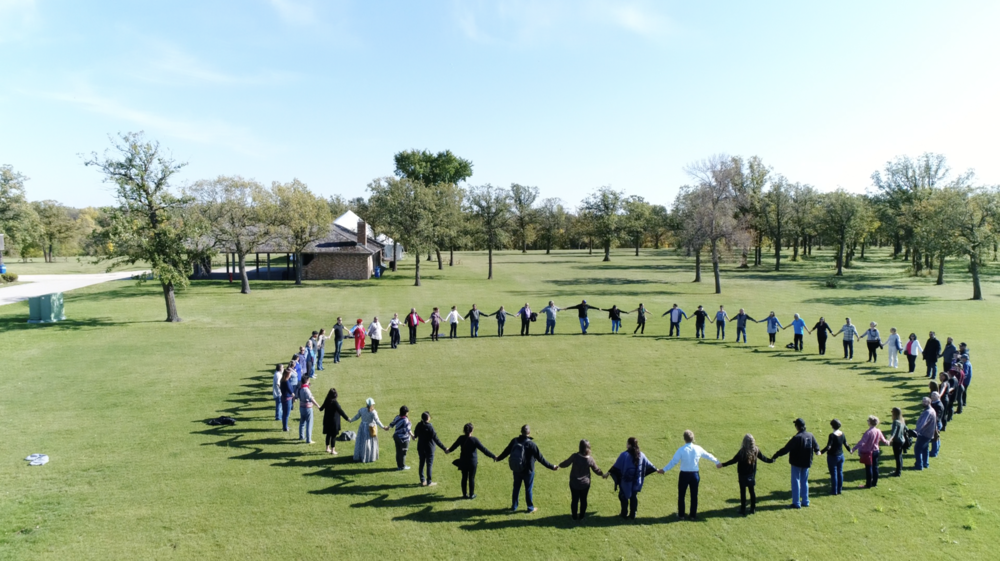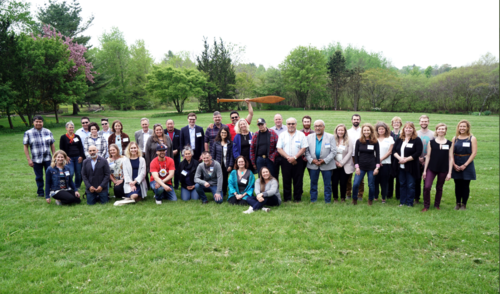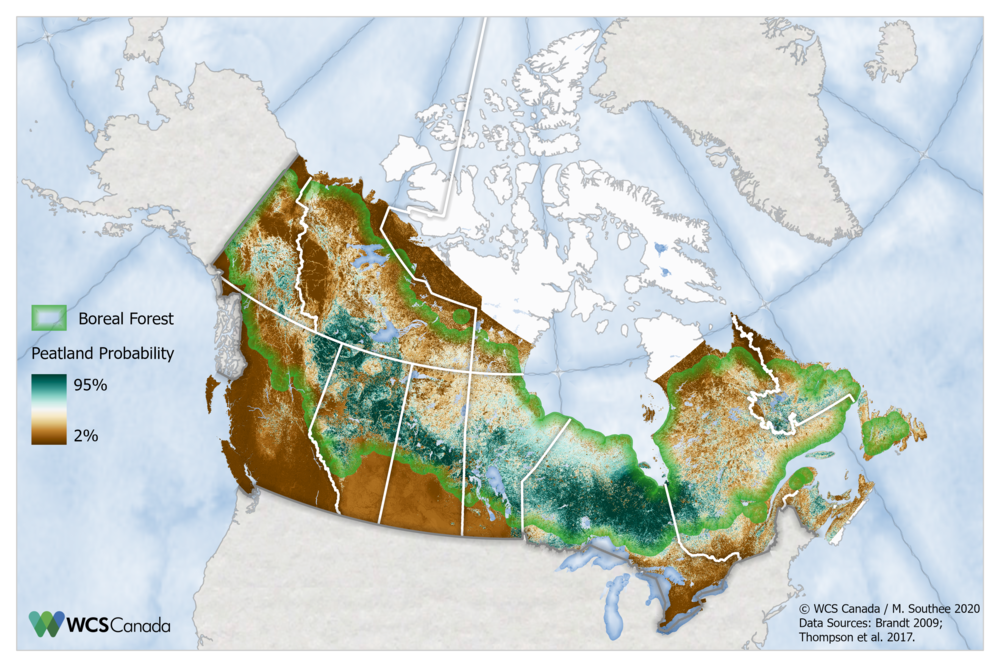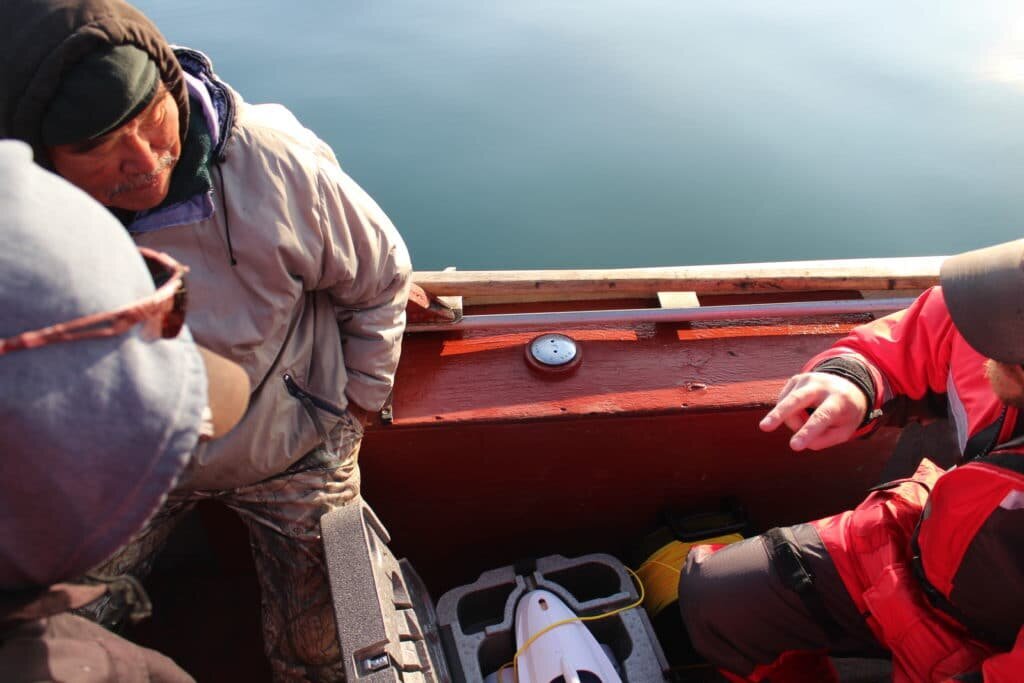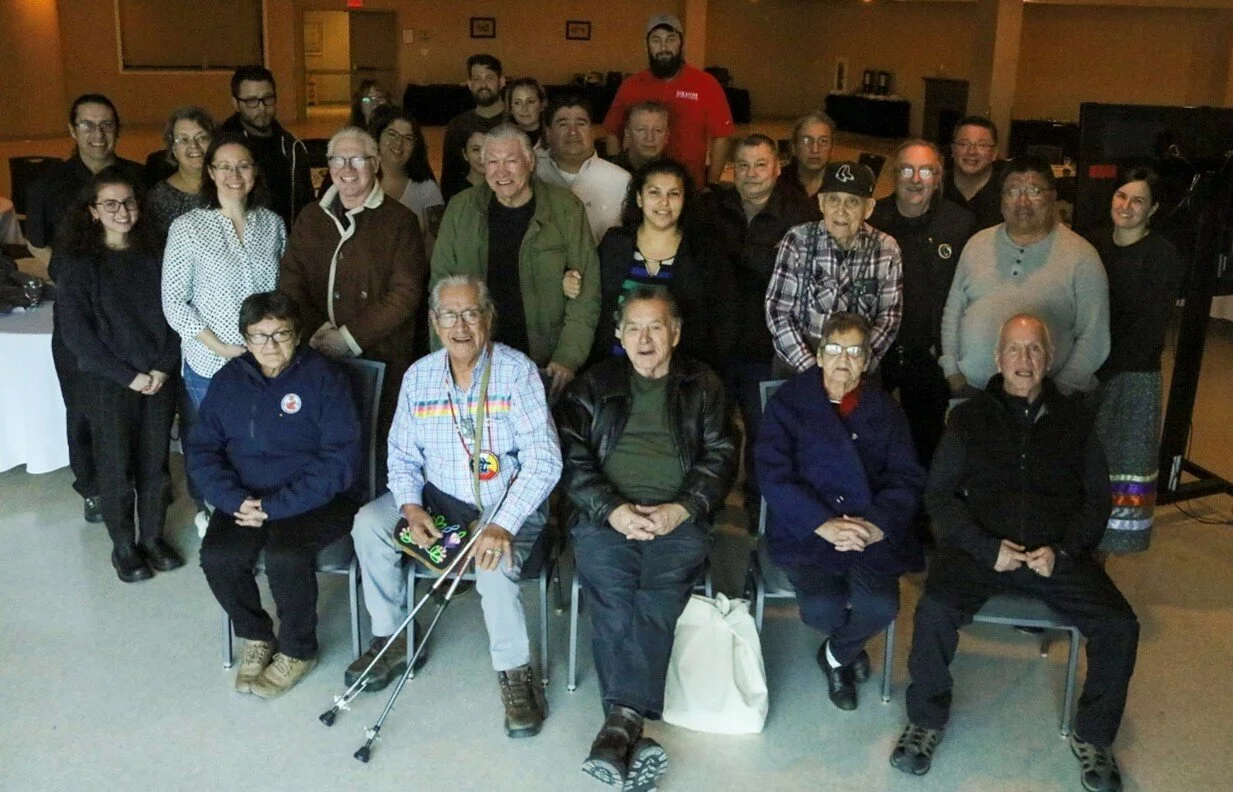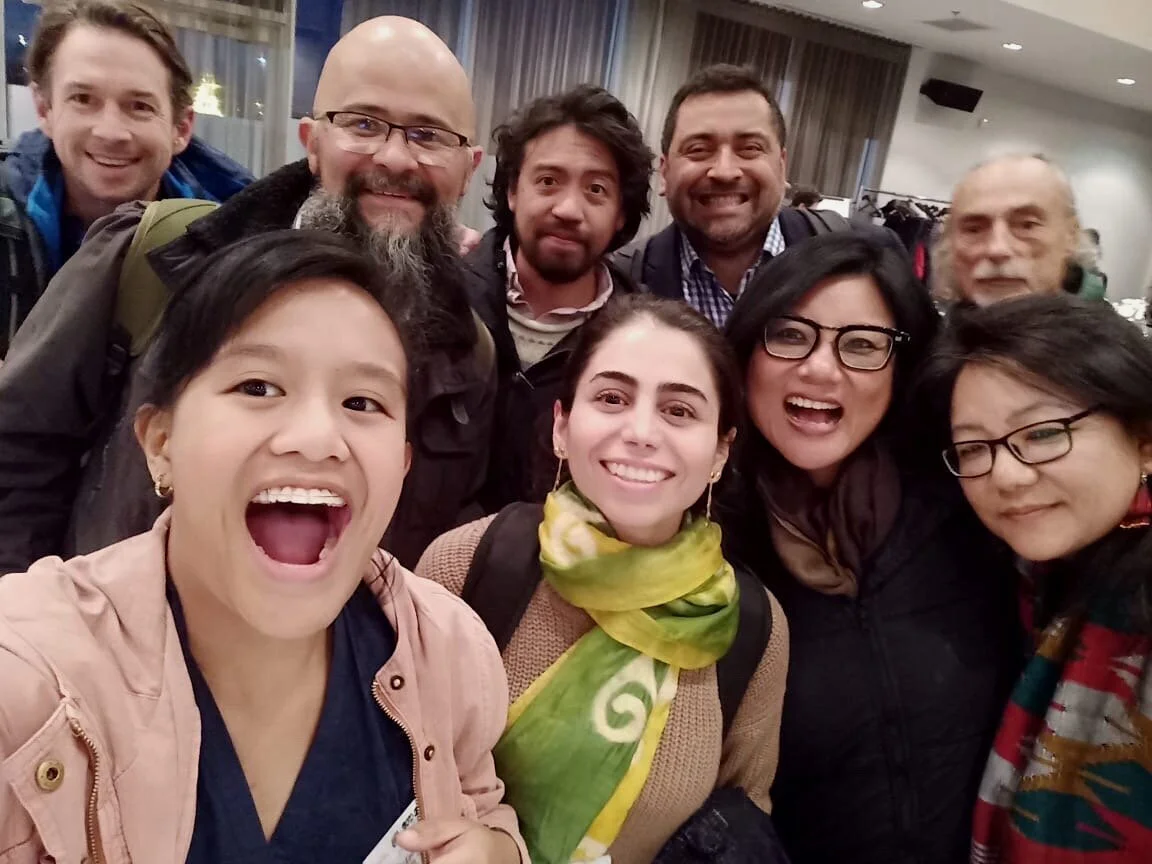Together, We Rise! 2020 Year in Review
The Conservation through Reconciliation Partnership (CRP) blog, Together, We Rise! is a space for partners and affiliates to share knowledge, research, and reflections about Indigenous-led conservation and CRP activities. The blog aims to inspire, inform, and connect people and organizations, and to support the CRP’s goal to transform the conservation sector in Canada.
On behalf of the CRP we extend our gratitude to all of the 2020 contributors to the blog. Thanks to all of you, we published 12 blogs in our first year of publication and we look forward to sharing many more stories and voices in 2021 and beyond. Thank you to all of our readers and supporters –your curiosity about and support for Indigenous-led conservation means the world to us!
Highlights of the 2020 blog edition are summarized below with links to the full-length versions. We are looking forward to bringing you the 2021 edition!
The Importance of Indigenous Protected and Conserved Areas in the time of COVID-19
By Allison Bishop, April 2020
The CRP launched the blog Together, We Rise! In April 2020 at a time when most of us were becoming increasingly physically isolated from one another due to the COVID-19 pandemic. Our first blog offered a reflection on a virtual dialogue (our first of many!) on the importance of Indigenous Protected and Conserved Areas (IPCAs) during the pandemic. The dialogue was hosted by members of the CRP Leadership Circle and Elder’s Lodge and extended a message of hope and resilience. The panel reflected on the importance of cultivating balance and responsibility in human relationships with the natural world and the role of IPCAs as places of refuge.
As blog author Allison Bishop summarizes,
“Indigenous-led conservation provides another path forward; a path that centers mutual respect, reciprocity, and responsibility towards all of creation. IPCAs are a model for community resilience against climate change and biodiversity loss and are a way of re-balancing an unhealthy relationship with the land.”
Read the full blog.
Photo credit: RiverVoices.ca
2. Nature-based Solutions
By Justine Townsend and Mary-Kate Craig, May 2020
In this blog CRP doctoral researcher Justine Townsend (University of Guelph) reflects on a project she led with fellow doctoral candidate Mary-Kate Craig (University of Guelph) and partners Anwaatin and Shared Value Solutions, and with funding from Metcalf Foundation, between 2018-2020. In May 2019, the team hosted a 2.5 day gathering in Guelph for participants from Indigenous organizations and communities, environmental NGOs, and researchers across Canada. Participants explored the alignment of Indigenous-led conservation and Indigenous-led, nature-based carbon storage (e.g. carbon offsets) by centering Indigenous perspectives. The project team identified the key opportunities, challenges, and priorities in the convergence of these two innovations in environmental governance through a literature review, key informant interviews, and the gathering.
“Nature-based solutions refer to actions that restore, protect, or sustainably manage ecosystems while contributing to the well-being of societies and biodiversity. When led by Indigenous Peoples, nature-based solutions can contribute to much-needed economic development while supporting Indigenous governance and cultures.”
For more information, you are invited to explore the 8 short videos produced as part of this work, as well as a summary report, and accompanying infographic. An accompanying editorial on the critical role Indigenous peoples hold with respect to nature-based solutions to climate change is available here.
Read the full blog.
Photo Credit: Guntar Kravis, Metcalf Foundation
3. Continuing the journey: Connections between the CRP and the Indigenous Circle of Experts
By Justine Townsend with Eli Enns and Danika Littlechild, May 2020
The name of the CRP blog, Together, We Rise!, is a reference to the Indigenous Circle of Experts (ICE’s) 2018 report, “We Rise Together: Achieving Pathway to Canada Target 1 through the creation of Indigenous Protected and Conserved Areas in the spirit and practice of reconciliation.” ICE identified recommendations for how federal, provincial, territorial, and Indigenous governments as well as NGOs and other organizations could collaborate to increase biodiversity conservation in Canada while uplifting Indigenous leadership. In this blog by Eli Enns, Danika Littlechild, and Justine Townsend, the authors explain how the mandate of the CRP is to address one of the “Four Moose” (i.e. major hurdles) with respect to advancing Indigenous-led conservation: capacity. For example,
“Capacity is required to support IPCAs through expertise such as Indigenous Guardians and ensuring that IPCAs are beneficial to all communities, human and non-human alike. In response to this moose, the CRP is supporting Indigenous Nations and communities to advance Indigenous-led conservation in their territories.”
Eli and Danika–former Co-Chairs of the Indigenous Circle of Experts—offer reflections on their work with ICE, IPCAs, and reconciliation as well as about the foundational principles of Ethical Space and Two-Eyed Seeing in the CRP.
Read the full blog.
Former co-chairs of the Indigenous Circle of Experts (ICE), Eli Enns and Danika Littlechild, explain the history of ICE and its connections to the CRP. Photos by River Voice Productions, video editing by Noémie Foley.
4. Indigenous-led nature based greenhouse gas offsets: One route towards reconciliation in Canada
By Steven Nitah and Mary-Kate Craig, July 2020
In this informative blog, CRP Leadership Circle member Steven Nitah and PhD Candidate Mary-Kate Craig make the case for Indigenous-led, nature-based greenhouse (GHG) playing a central in the transition to a low carbon future. The authors describe the opportunities and challenges for creating economic benefits for Indigenous communities through GHG offsets. Through innovative examples from Australia and the United States the authors illustrate the opportunities enabled by a cap and trade system and Indigenous carbon credits which generate profits for Indigenous peoples who are protecting and stewarding their territories. They explain,
“Numerous Nations in Canada have expressed interest in creating nature-based solutions which include GHG offset projects as part of their overall land relationship planning.”
However, a lack of diverse markets for GHG offsets in Canada is constraining developments in this space. In the context of reconciliation, nature-based solutions could hold great promise for Canada if we establish a GHG offset market and create branding for carbon offsets that distinguish and elevate Indigenous-led carbon offsets.
Read the full blog.
Photo credit: Haven Nitah
5. Peatlands: Vital for carbon storage and stewardship
By Justina Ray and Meg Southee, August 2020
Continuing in the vein of climate change mitigation and carbon storage, Justina Ray and Meg Southee from CRP partner Wildlife Conservation Society (WCS) explain the value of Canadian peatlands. As a “vital resource,” peatlands contribute to healthy river systems, provide habitat for wildlife, and are a critical storehouse for carbon, particularly in northern Canada. The authors summarize a WCS project that developed a
““…story map” about the value of peatlands, their role in carbon storage, and how they are being affected by climate change and industrial development. The result is a visual narrative that guides viewers through how peatlands function, how they may be affected by climate change and what happens when roads, mines or other developments are built through or within them.”
Carbon storage by peatlands is a dynamic process that involves both carbon absorption as well as carbon release due to drying and flooding, wildfires, and industrial development. As such, peatlands must be appropriately stewarded and protected and local Indigenous peoples are well positioned to do so—as they have done since time immemorial. Indigenous peoples ought to directly benefit from their stewardship and care for these ecosystems. If we fail to act then vast amounts of carbon could be released into the atmosphere which will have serious and unintended consequences.
Read the full blog.
Canadian Boreal forest and peatlands. Map Credit: WCS Canada/Meg Southee
6. “Take your maps and go!" From colonialism to consent in conservation”
By Larry Innes, August 2020
Moving to the legal dimensions of conservation, this blog by the CRP’s Domestic Law and Policy Stream Lead Larry Innes shares a story that helps to “untangle the complicated and conflicted history of conservation in Canada.” The story is about the establishment of Thaidene Nëné in the Northwest Territories in the homelands of the Lutsel K’e Dene First Nation. When federal officials initially proposed a National Park to the Lutsel K’e Dene 50 years ago—after plans had already been in the works for over decade—the community rejected the plan. Larry explains how conservation, like development, has been another means by which Canada historically extended colonial authority over Indigenous lands, which negatively impacted Indigenous communities and livelihoods. In the past 30 years we’ve begun to witness the emergence of a conservation paradigm that is generating “new models for establishing and operating protected areas that recognize, support and sustain Indigenous knowledge, jurisdiction and livelihoods…” Thaidene Nëné is an example of this evolution and is “designated as an Indigenous Protected and Conserved Area (IPCA) by Łutsël K’e, as a National Park Reserve by Canada, and as a territorial protected area by the Government of the Northwest Territories.” Each governing party have shared responsibilities to maintain the ecological integrity of the area as well as the Denesoline way of life.
Read the full blog.
Chief Pierre Catholique; Photo Credit: Lutsel K'e Dene First Nation ©
7. Indigenous-led conversation can help us reverse the decline of species at risk of extinction in Canada
By James Snider, September 2020
Transitioning to the thorny topic of the extinction crisis, this blog by James Snider from WWF-Canada, a partner organization to the CRP, explains how WWF-Canada’s recent “Living Planet Report Canada 2020” revealed alarming increases in species at risk. James argues that while Canada’s ambitious goal to protect 30% by 2030 is applaudable we must look beyond area-based targets alone. He states,
“We must embrace Indigenous leadership — both in terms of how we advance our protected areas, including through Indigenous Protected and Conserved Areas (IPCAs) and by transforming our broader relationship with nature.”
Additionally, we must “bring scientific and Indigenous knowledge into an ‘ethical space’ to make the best possible conservation decisions by respecting and valuing different types of knowledge systems.” By ensuring that Indigenous governments play a key role in protecting the environment, Canada can signal to the world how we might build a more equitable and just future in which “both wildlife and people thrive.”
Read the full blog.
Researcher David Deslauriers and harvesters Lucassie Arragutainaq and Noah Meeko discuss underwater video equipment © Doug Chiasson / WWF-Canada
8. Embodying Ethical Space during COVID-19
By Anastasia Papadopoulos, October 2020
Moving to the east coast and the topic of research, MES Student Anastasia Papadopoulos (Dalhousie University) shares her reflections on conducting community-partnered research in Ethical Space, particularly during a pandemic. As a first-generation Canadian, Anastasia approaches her research with the Confederacy of Mainland Mi’kmaq and the Unama’ki Institute (Nova Scotia) with deep care and respect for her community partners and multiple knowledge systems. Speaking to the collective nature of Ethical Space, she reflects
“Ethical Space is not only something that researchers are supposed to engage with – it is a space that partners, participants, communities, researchers all choose to enter, together. It is a relationship; it is trust; and it is something that you cannot frame as being only your responsibility.”
Despite challenges posed by COVID-19 to the research project and fieldwork, Anastasia and her partners have adapted to the circumstances and continue their collaboration at a distance. Most importantly perhaps, Anastasia reminds us that Ethical Space isn’t just a concept, but a paradigm that requires embodiment, openness, trust, respect, and adaptation.
Read the full blog.
IPCA Workshop in Membertou on Unama’ki hosted by UINR (February 2020); Photo Credit: UINR
9. The Constitution is Under Attack
A joint statement by the CRP Leadership Circle, October 2020
In this special joint statement regarding the conflict over the lobster fishery in Nova Scotia, the CRP Leadership Circle addresses the “persistent misunderstandings about our collective responsibilities to uphold aboriginal rights enshrined in the Canadian constitution and in UNDRIP.” The failure of Crown agencies and the general public to uphold these responsibilities challenges the ability to advance IPCAs. The Leadership Circle points to the “weaponization of ‘conservation’ against the M’ikmaq people,” by undermining the Mi’kmaq people’s ability to enact their rights to manage a sustainable and moderate livelihood fishery. This is counter to what we know about Indigenous approaches to harvesting. Time and time again, both Western and Indigenous science reveals an alignment between Indigenous stewardship and the conservation of biodiversity. Thus, “the conflict is not about conservation it is about power.” Despite this, CRP Elder Albert Marshall urges us “to not let hate define who we are and instead choose love as a way forward.”
Read the full statement.
10. To Wood Buffalo National Park, with love: Reflections from the authors
By Chloe Dragon-Smith and Robert Grandjambe, October 2020
Continuing in the vein of conflict and reconciliation, this guest blog by Indigenous northerners Chloe Dragon-Smith and Robert Grandjambe reinforces the importance of balancing relationships and addressing harm in parks such as Wood Buffalo National Park in northeastern Alberta and the southern Northwest Territories. Through personal stories Chloe and Robert describe how opportunities for themselves and their communities to practice their cultures and care for the Land have in many cases been severed, and continue to be strained, due to the presence of the park. While Indigenous peoples continue to experience alienation from their territories now in the park, non-Indigenous recreational use is sanctioned and prioritized. They explain,
“In our Indigenous worldviews, Land needs people. We are part of Land - our ongoing and dynamic relationships are integral to sustaining abundance, for everyone. Us being here, participating and living, is the ultimate conservation.”
The authors encourage all parties (including Wood Buffalo National Park, Parks Canada, Government of Canada) to join in conversation to untangle the “uncomfortable mess” and create “positive change for the future.”
Read the full blog.
Photo by Chloe Dragon-Smith
11. Rights-based approaches in the post-2020 Global Biodiversity Framework
By Ghanimat Azhdari, November 2020
It was with deep sadness and respect for our friend and colleague Ghanimat Azhdari (PhD Student, University of Guelph) that we published this post she was working on before she died on flight 752 in January of this year. In this memorial blog we honour her contributions at the Convention on Biological Diversity (CBD) meetings held November-December 2019 in Montreal, Canada. In this blog Ghanimat conveys the critical importance of rights-based approaches in conservation and particularly in the post-2020 Global Diversity Framework being negotiated in the international policy arena. Ghanimat shares highlights from various dialogues and working groups she attended during the meetings specific to rights and equity, and the links between nature and culture. For example, a new potential target for the post-2020 framework she identified was,
“Full and appropriate recognition of and support for indigenous peoples’ and communities’ rights and responsibilities to their collective territories, lands and waters, in accordance with their self-determined customary laws, governance systems and management practices.”
Read the full blog.
Ghanimat (front, second from left) at the CBD meetings in Montreal in December 2019 (Photo Credit: Larry McDermott)
12. Film preview of Water Wonders: Learning about water, culture, colonialism and connections
By Kristy Franks, December 2020
Our 2020 blog edition culminated with PhD Candidate Kristy Franks’ (Concordia University) preview of a research-based documentary that will be released shortly. “Water Wonders” is a collaboration with Cree youth from Eeyou Istchee (James Bay, Northern Quebec) and partners from South Australia. Using participatory methods and guided by research questions inspired by water, this project aims to “understand how different groups can contribute to intercultural and intersectoral water cooperation in more informed ways.” Rooted in Participatory Action Research, which is aligned with Indigenous methodologies, the team used “videovoice” to document knowledge derived from
“…interviews, conversations with Elders, water monitoring activities, water policies and related colonial politics, water ceremonies, water dances, connecting with waters in and around us, and activities like scuba diving, surfing and canoeing.”
Despite COVID-19 related delays and challenges the team is in the collaborative editing process at present and is excited to share the final product soon. You can follow the project by liking their Facebook page.
Read the full blog.
